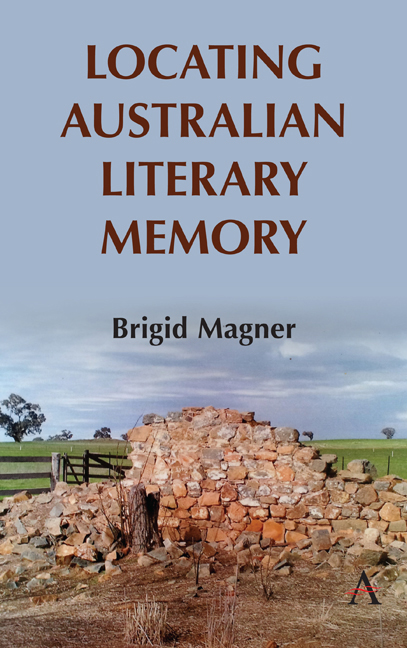Book contents
- Frontmatter
- Contents
- List of Illustrations
- Acknowledgements
- Introduction: Remembering Absent Authors
- Chapter One Adam Lindsay Gordon's Grave
- Chapter Two Joseph Furphy in the Riverina
- Chapter Three Henry Handel Richardson and the Haunting of Lake View
- Chapter Four Henry Lawson Country
- Chapter Five The Multiple Birthplaces of A. B. ‘Banjo’ Paterson
- Chapter Six Nan Chauncy's Sanctuary
- Chapter Seven Living Memorials: The Houses of Katharine Susannah Prichard and Eleanor Dark
- Chapter Eight Statue Mania: P. L. Travers and the Appeal of Mary Poppins
- Chapter Nine Kylie Tennant's Hut
- Chapter Ten The David Unaipon Monument at Raukkan
- Conclusion: Towards an Expanded Repertoire of Literary Commemorations
- Notes
- Index
Chapter Two - Joseph Furphy in the Riverina
Published online by Cambridge University Press: 10 December 2019
- Frontmatter
- Contents
- List of Illustrations
- Acknowledgements
- Introduction: Remembering Absent Authors
- Chapter One Adam Lindsay Gordon's Grave
- Chapter Two Joseph Furphy in the Riverina
- Chapter Three Henry Handel Richardson and the Haunting of Lake View
- Chapter Four Henry Lawson Country
- Chapter Five The Multiple Birthplaces of A. B. ‘Banjo’ Paterson
- Chapter Six Nan Chauncy's Sanctuary
- Chapter Seven Living Memorials: The Houses of Katharine Susannah Prichard and Eleanor Dark
- Chapter Eight Statue Mania: P. L. Travers and the Appeal of Mary Poppins
- Chapter Nine Kylie Tennant's Hut
- Chapter Ten The David Unaipon Monument at Raukkan
- Conclusion: Towards an Expanded Repertoire of Literary Commemorations
- Notes
- Index
Summary
Memorials, by revivifying the man, indirectly strengthen and perpetuate also his creative contributions to our culture. The pilgrim cannot depart without some insight and appreciation of what the memorial stands for.
– Barbara York MainJoseph Furphy, considered to be ‘the father of the Australian novel’, is best known for Such Is Life, a little-read and often baffling novel about life in rural Australia. In 1981, Manning Clark claimed that Furphy is ‘the author of a classic which few were to read and no one was ever to establish clearly what it was all about’. Julian Croft observes that Such Is Life is a ‘cultural monument’ which is ‘more often referred to than read for pleasure’ since it ‘tests the skill, patience and endurance of those who attempt it’.
The demanding nature of the novel, with its unusually complex narrative structure, inter-textual references and playful use of language, can be off-putting to many readers but it has attracted a small number of dedicated followers who have been largely responsible for the efforts to memorialise Furphy and his contribution to Australian literary culture. This chapter considers various sites associated with Furphy, arguing that they offer tourists opportunities to engage imaginatively with aspects of Australia's frontier past.
Literary tourism, which involves the interconnected practices of visiting and marking sites associated with writers and their work, has been evolving in Anglophone countries since the nineteenth century. Various systems of memorialisation have been developed, ranging from the official and topographical such as the setting up of memorials and plaques, to more intimate rituals such as following in the footsteps of writers or their characters. While literary tourists may seek out the settings of their favourite fiction, some writers choose settings which have ‘real world’ counterparts that may not be reproduced realistically. As Barbara Piatti et al. observe, settings can be completely invented; a crossfading of two spaces, an existing region with fictitious elements, a likely place with an invented name, or an existing region remodelled, like Furphy's Riverina in Such Is Life.
The business of literary tourism in Australia is underdeveloped compared to the thriving heritage industries of Britain and America, but there is increasing interest in tracking places that are connected with local authors and their work.
- Type
- Chapter
- Information
- Locating Australian Literary Memory , pp. 35 - 54Publisher: Anthem PressPrint publication year: 2019



